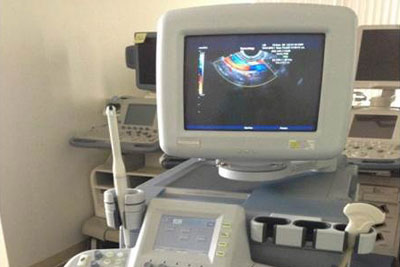
A pelvic ultrasound uses sound waves to make a picture of the organs and structures in the lower abdomen. A pelvic ultrasound looks at the bladder, ovaries, uterus, cervix and fallopian tubes. This can be used to identify cysts, fibroids and other gynecological conditions, organs and structures that are solid and uniform, like the uterus and ovaries, or are fluid filled, like the bladder show up clearly on a pelvic ultrasound, sending sound waves to a computer. This is done by using a small handheld instrument called a transducer that is gently moved over your abdomen, which converts a picture onto a video screen. In some cases, a CT scan or an MRI may be needed to confirm findings. Sometimes a follow-up ultrasound may be ordered to determine if abnormal findings are persisting, worsening or resolving on their own.Obstetrical and gynecological ultrasounds can be done transabdominally and/or transvaginally. You should wear loose fitting clothing for a pelvic ultrasound. You may need to remove your clothes below the waist and put on a drape before the test.
Transabdominal Ultrasound
If a transabdominal ultrasound is done, you will be asked to drink 32 ounces of water about an hour before the test to fill your bladder. A full bladder pushes the intestines (which contain air) out of the way of pelvic organs. This makes the ultrasound picture clearer. Do not empty your bladder until instructed. You will likely feel slight pressure as the transducer passes over your abdomen and a strong urge to urinate because your bladder is full.
Transvaginal Ultrasound
If you are having a transvaginal ultrasound, tell your healthcare professional if you are allergic to latex so a latex-free cover can be put over the transducer before it is used. Transvaginal ultrasounds often make a clearer picture than the transabdominal ultrasounds because the transducer probe gets closer to the organs to be viewed. You may feel pressure from the transducer as it is passed into your vagina.
Obstetrical Ultrasound
A Level I ultrasound is usually done at 19-21 weeks gestation. This is usually done transabdominally. During this exam, the gestational age, location of the placenta, amniotic fluid volume and entire anatomical survey is done. Please inform us if you do not want to know the sex of the baby revealed to you.
